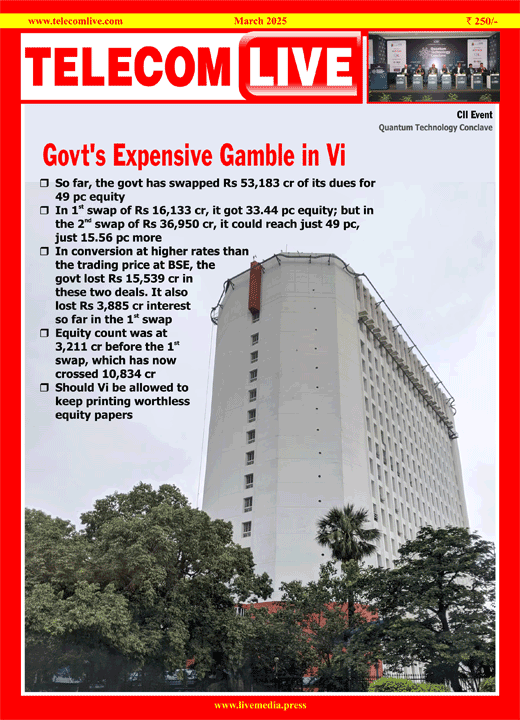Jio grabs more RMS than Airtel in Q4, Vodafone Idea cedes more ground: Trai data
Reliance Jio Infocomm has grabbed more revenue market share (RMS) than Bharti Airtel in the fiscal fourth quarter, helped by gains in the country’s metro and rural mobile markets, said experts, analysing latest telco financial data put out by the sector regulator.
Jio’s adjusted gross revenue market share, commonly known as RMS, rose 13 basis points (bps) sequentially to 41.7% in the March quarter, FY23, while Airtel’s was almost unchanged at 36.5%, partly weighed down by the sharp hikes taken in its base prepaid rates.
Loss-making Vodafone Idea (Vi) continued to lose RMS in the fourth quarter due to underperformance in its leadership circles, analysts said. Its RMS slipped 42 bps sequentially to 16.6%, data collated by the Telecom Regulatory Authority of India (Trai) showed.
The RMS is a measure of overall telecom market leadership. A basis point is 0.01%.
“Jio has seen market share gains in most circles, reporting around 20 bp sequential rises in metro, A and B circles, while Bharti’s revenue share gains in the metros/A circles were lower at 10 bp (sequentially) and fell 20 bp in the B circles,” said Motilal Oswal.
It added that Airtel’s market share fell in the `B’ circles due to the increase in the base level tariff for its 2G packs. “The major loss (for Bharti) was seen in UP-West/UP-East circles by 180 bp/90 (bp) QoQ.”
Airtel’s 2G mobile rates have become costlier across its 22 circles after the telco hiked base prepaid rates.
ICICI Securities, in turn, said the dip in Vi’s RMS in leadership circles in Q4FY23 was largely triggered by a sequential fall in revenue in key markets such as Andhra Pradesh (down 3% on quarter) and UP-East (down 6.2%).
Cash-strapped Vi needs urgent external funding to beef up its 4G coverage and also roll out 5G services, given that financially-stronger rivals Jio and Airtel are on course to roll out the next-gen networks nationally by the year-end.
Trai data showed Jio and Airtel reported sequential growth on the adjusted gross revenue (AGR, including NLD revenue) front in the March quarter, while Vi reported a sequential fall, underlining the latter’s continuing failure to compete effectively with the top two carriers.
Jio and Airtel reported 1.7% and 1.3% sequential rises in AGR (including NLD revenue) to Rs 23,300 crore and Rs 20,400 crore respectively in the fiscal fourth quarter. By contrast, Vi’s AGR (including NLD revenue) fell 1.1% on-quarter to Rs 9,300 crore in the January-March period.
Trai data, though, showed that overall March quarter sectoral AGR (including NLD) rose 1.4% sequentially to Rs 56,000 crore despite the absence of headline tariff hikes in the past 12 months, said ICICI Securities. Sectoral AGR growth, it added, was helped by Jio and Airtel subscriber additions in the March quarter and the latter’s strong conversions to 4G from 2G. Industry ARPU (average revenue per user) grew 1.5% sequentially to Rs 165 in Q4FY23.



